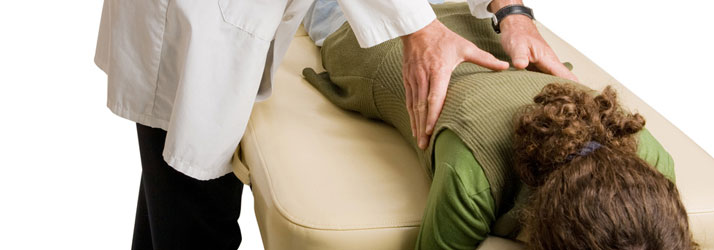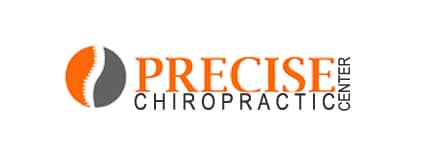What Every Patient Should Know About Their Spine in Lake in the Hills IL?

The saying “knowledge is power” is never more true than when applied to your health. Patients who better understand how their body works and what is causing their condition can be more active in their care. This is important because, as a patient, home care, lifestyle changes, and choices about what treatments to pursue are in your hands. Educating yourself when dealing with stubborn back or neck pain makes sense.
The spine is a complex piece of engineering. It has several components, and any of them can cause pain. When you meet with your Lake in the Hills provider for an assessment or to discuss treatment options, you’ll benefit from knowing something about the terms they are using. Here’s your patient’s guide to each component of the spine: vertebrae and joints, nerves, discs, and soft tissues. Let’s dive in.
Vertebrae
Vertebrae are the building blocks of the spine. They are short boney rings with a hollow space in the center to house the spinal cord — the highway of the nervous system. Most people are born with thirty-three vertebrae, but adults typically have 24. During development, several vertebrae at the bottom of the spine fuse to form the sacrum and tailbone (coccyx).
Above the sacrum, the spine is divided into three sections according to how it curves. The five vertebrae that make up the lower back's inward curve are called the lumbar spine. The outward curve of the middle to upper back is longer, with twelve vertebrae, and is called the thoracic spine. Seven vertebrae form the neck, or cervical spine, which curves inward. The spinal curves give it an S shape when viewed from the side. These curves develop as children learn to stand and walk. They are vital to stability and flexibility.
When bad posture or injury changes a spinal curve, the whole spine gets thrown out of alignment. The straightening of the cervical curvature is a common cause of chronic neck pain. Smaller movements of vertebrae, called subluxations, can pinch nerves, inhibit the range of motion and cause pain and stiffness. Your chiropractor in Lake in the Hills can adjust the spine to correct subluxations and prescribe exercises to address curvature problems.
Facet Joints
Each vertebra has two sets of facet joints that connect vertebrae and create flexibility. Facet joints are synovial joints, the same as your knees and elbows. This means they contain cartilage that’s lubricated with synovial fluid. Facet joints are surrounded by a protective membrane and rely on soft tissue structures like ligaments and tendons to stabilize them.
Arthritis of the facet joints is called facet syndrome. It’s characterized by a cartilage breakdown leading to inflammation, nerve irritation, and pain. A trauma, such as a fall or car accident, can also injure facet joints. Depending on the type of damage to the facet joint, you may experience stiffness (hypomobility) or unusually loose, unstable joints (hypermobility). Problems with facet joints are often painful since there are nerves nearby.
Nerves
When a provider talks about back pain, chances are good that you’ll hear the term “nerve root.” This describes the part of the nerve near the spinal cord. Nerves branch out from the spinal cord to other body systems. To do this, they must pass through an opening in the spine called a neural foramen. These openings are located between every second vertebra, one on each side, for a total of two per pair of vertebrae. The neural foramina are close to the facet joints and the disc space. Inflammation or injury to either of these areas can cause nerve root irritation and pain.
Injuries or subluxations to the spine often cause symptoms in other body parts, depending on which nerves are involved. Tingling and numbness in the extremities, asthma and other breathing problems, and digestive issues may all be caused by pinched or irritated nerve roots.
Intervertebral Discs
As a back pain sufferer, you’ve probably heard the word disc from your provider. These structures are one of the most common causes of back pain. Despite this, they play a vital role in spinal anatomy.
Discs are composed of two parts, a tough outer skin called the annulus, and a jelly-like center called the nucleus pulposus. The annulus is made up of tough fibers that play two roles: connecting the vertebra that they sit between and holding the squishy nucleus together. Discs provide shock absorption and allow for smooth movement. They also space vertebrae to keep them from compressing nerves.
Injuries can move discs slightly out of place, causing them to press on nearby nerve roots. Tears in the annulus, caused by wear and tear or traumatic injury, allow the fluid in the nucleus to leak out. Disc fluid irritates nearby tissues and nerves and causes a burning sensation.
Since they are composed of tough fibers that receive little blood flow, discs can be slow to heal. Many patients require treatment to keep disc injuries from causing prolonged pain. Specialized treatments like spinal decompression therapy bring nutrients and oxygen to the disc space and move bulging discs back into place. Over 80% of patients with persistent low back pain experience long-term relief after decompression therapy.
Soft Tissues
Soft tissues, including ligaments, tendons, and muscles, support the spine. Ligaments and tendons are both tough cord-like tissue structures composed of collagen, but they do slightly different jobs. Tendons attach bones to muscles, allowing muscles to move bones. Ligaments attach bone to bone and stabilize joints.
Trauma or overuse can stretch or tear ligaments and tendons. In a whiplash injury, ligaments may be overstretched. This often causes permanent injury because ligaments don’t bounce back well. It’s helpful to think of muscles as rubber bands that can stretch and bounce back and ligaments as cloth or leather. Once stretched, they may never return to their original strength. Tendons have more flexibility but can still struggle to heal if overstretched.
Ligament and tendon tears range from small to complete. A complete or near-complete tear may require surgery. Most ligament and tendon injuries respond to non-invasive treatments. Laser therapy is the go-to treatment for these injuries because it works at the cellular level to encourage collagen production and strong tissue formation.
Muscles are the other group of soft tissues that compose your spine. Muscles are not tough tissues like tendons and ligaments. They receive robust blood flow and heal better than other spinal structures. Joints give the spine flexibility, but muscles allow movement. They also support the spine, helping to keep vertebrae and discs in alignment. The muscles next to the spine are called paraspinal muscles.
Muscle pain may result from a direct injury to the muscle or as a reaction to an injury in a nearby structure. Anyone who’s had a muscle spasm knows they can be excruciating. Heat therapy, massage, and sometimes medication can calm muscle spasms while the underlying cause is treated. Laser therapy may encourage faster healing and calm spasms if the muscle has been strained or torn.
Spine Injury Treatment in Lake in the Hills
At Precise Chiropractic Center, our spine experts can assess your injury and recommend the right treatment plan. Stubborn back pain is frustrating, but healing is possible. Schedule a consultation today to find out how chiropractic care can restore your quality of life.
OFFICE HOURS
Monday
8:30am - 10:30am
4:00pm - 6:30pm
Tuesday
4:00pm - 6:00pm
Wednesday
8:30am - 10:30am
4:00pm - 6:30pm
Thursday
4:00pm - 6:00pm
Friday
8:30am - 10:30am
Saturday
8:30am - 10:30am
Precise Chiropractic Center
4581 Princeton Lane Suite 119
Lake in the Hills, IL 60156
(847) 669-6888

